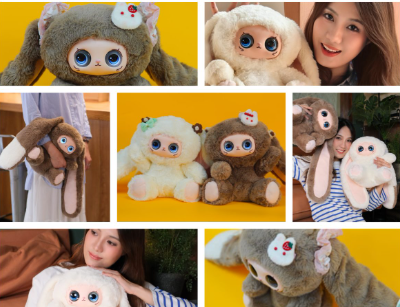The Future of AI Toy Market: How Brands Can Leverage AI to Boost Sales?
7/12/20255 min read


Understanding the AI Toy Market Landscape
The AI toy market is rapidly evolving, marked by substantial growth and innovation. According to recent statistics, the market is anticipated to reach $5 billion by 2025, showcasing a compound annual growth rate (CAGR) of approximately 20%. This growth can be attributed to an increasing consumer demand for interactive and educational toys that integrate artificial intelligence. Parents are now more inclined to invest in toys that contribute not only to entertainment but also to learning and development.
Trends within consumer preferences highlight a shift towards products that offer personalized experiences. Modern children are drawn to toys that can adapt to their behavior, learning styles, and preferences, creating a dynamic user experience. The rise in digital connectivity has also influenced this trend, as families seek toys that can seamlessly integrate with technology, such as smartphones and tablets. Consequently, brands that fail to keep pace with technological advancements risk falling behind in an increasingly competitive market.
Demographic shifts are also redefining the AI toy sector. With Millennials and Gen Z now becoming parents, their upbringing in a digital world is influencing their purchasing decisions. These demographics prioritize educational value over traditional play, emphasizing the need for innovation within the toy industry. Furthermore, the growing emphasis on STEM (Science, Technology, Engineering, and Mathematics) education has led to increased demand for AI-powered toys that encourage creativity and logical thinking.
Key players in the industry, such as LEGO, Hasbro, and Mattel, are already implementing AI technology to transform traditional products into sophisticated, interactive experiences. These companies are utilizing data analytics and customer feedback to design products that resonate with the modern consumer, thus fostering a deeper connection with their audiences. Understanding these dynamics of the AI toy market landscape will provide valuable insights for brands looking to adapt their strategies and capitalize on emerging opportunities.
Benefits of Integrating AI Into Toys
Integrating artificial intelligence into toys offers a multitude of advantages that can significantly augment the market appeal and functionality of these products. One of the primary benefits is the capability to provide personalized play experiences. AI-driven toys can learn from a child's interactions, preferences, and behavior patterns. This enables the toy to adapt its responses and challenges, ensuring that play remains engaging and suited to the individual developmental needs of each child. Such personalization not only enhances the play experience but also promotes continued user engagement over time.
Moreover, AI integration significantly improves educational opportunities. Toys embedded with AI can deliver educational content in a manner that is interactive and enjoyable. They can assess a child's progress and understand their learning pace, modifying their educational approach accordingly. This adaptive learning model helps foster critical thinking and problem-solving skills, making playtime beneficial from an educational standpoint.
Safety is another crucial consideration, especially when it comes to children’s toys. AI can contribute to advanced safety features, including real-time monitoring of interactions and environments. For instance, toys can utilize voice recognition to identify when a child is interacting with them and detect any unexpected behavior or distress, alerting guardians if necessary. Such capabilities ensure that children can play safely while providing peace of mind to parents.
Furthermore, the use of AI facilitates enhanced engagement through the thorough collection and analysis of user interactions. Brands can glean invaluable insights from how children interact with AI-enhanced toys, allowing for iterative improvements in design and function. This data not only helps in refining existing products but also drives the creation of innovative toys that stimulate creativity and encourage social skills development. By investing in AI technology, toy brands can differentiate themselves in a competitive market, delivering products that resonate deeply with both children and their caregivers.
Strategies for Leveraging AI to Boost Sales
As the toy industry evolves, integrating artificial intelligence (AI) offers significant potential for boosting sales. One of the first strategies brands should consider is creating interactive marketing campaigns. Utilizing AI-driven analytics, toy companies can target advertisements more effectively, ensuring that they reach the right audience. By analyzing consumer behavior patterns, brands can develop campaigns that resonate with their target demographics, leading to increased engagement and higher conversion rates.
Another productive strategy is building subscription services that leverage AI insights. By tracking customer preferences and purchasing habits through AI algorithms, brands can personalize subscriptions to meet individual needs. This approach not only fosters customer loyalty but also transforms one-time buyers into regular patrons. Delivery of curated toys based on past preferences enhances customer experience and maximizes sales potential in a competitive market.
Additionally, utilizing augmented reality (AR) significantly enhances play experiences and promotes engagement. Brands can incorporate AR into their toys or mobile applications, allowing children to interact with toys in immersive ways. As a result, playtime becomes more enjoyable and educational, creating opportunities for upselling additional AR-enhanced products or services. This innovation not only appeals to tech-savvy consumers but also positions brands as forward-thinking in an increasingly digital landscape.
Finally, innovating with smart toys that learn and adapt over time can captivate consumers. AI technology enables toys to adjust their behavior according to a child's interactions. By designing adaptive play experiences, brands can encourage repeated usage, driving sales through additional toy lines that complement or enhance the learning capabilities of these smart toys.
Furthermore, case studies of successful brands implementing these strategies illustrate their effectiveness. Companies that have embraced AI, AR, and subscription models report increased customer satisfaction and growth in their sales figures, underscoring the importance of leveraging innovative technologies in the toy market.
Future Trends and Innovations in the AI Toy Market
The AI toy market is poised for significant transformation driven by emerging trends and innovations. One of the most impactful trends is the integration of the Internet of Things (IoT) into educational and play-based toys. IoT-enabled toys facilitate real-time interaction, allowing children to engage in customized learning experiences. This connectivity enhances the role of toys as learning tools, promoting cognitive development while catering to individual preferences and skills. As brands adopt IoT technology, they can gather valuable data on usage patterns, allowing for better product design and targeted marketing.
Moreover, advancements in machine learning are expected to reshape the functionalities of AI toys. With improved algorithms, these toys can offer heightened adaptability and personalization, responding to a child’s learning pace and interests. For example, an AI companion could learn a child’s favorite games and suggest new activities based on their evolving skills. This capability not only enhances user experience but also encourages prolonged engagement, which is crucial for brands looking to boost customer loyalty and repeat purchases.
Sustainability is another vital factor influencing the future of the AI toy market. As consumers become more environmentally conscious, brands are challenged to create eco-friendly toys without compromising on technological advancements. Innovative materials, such as bioplastics and recycled components, are becoming increasingly important in toy production. Moreover, brands that adopt sustainable practices in their supply chains can attract conscientious consumers, enhancing their brand image and market competitiveness.
Lastly, understanding evolving consumer demands is critical for brands aiming to stay ahead in this dynamic landscape. As parents seek toys that provide educational value and promote social interaction, AI toys that foster collaborative play will likely gain traction. By aligning product offerings with these shifting preferences, brands can ensure their relevance in a rapidly changing market.
